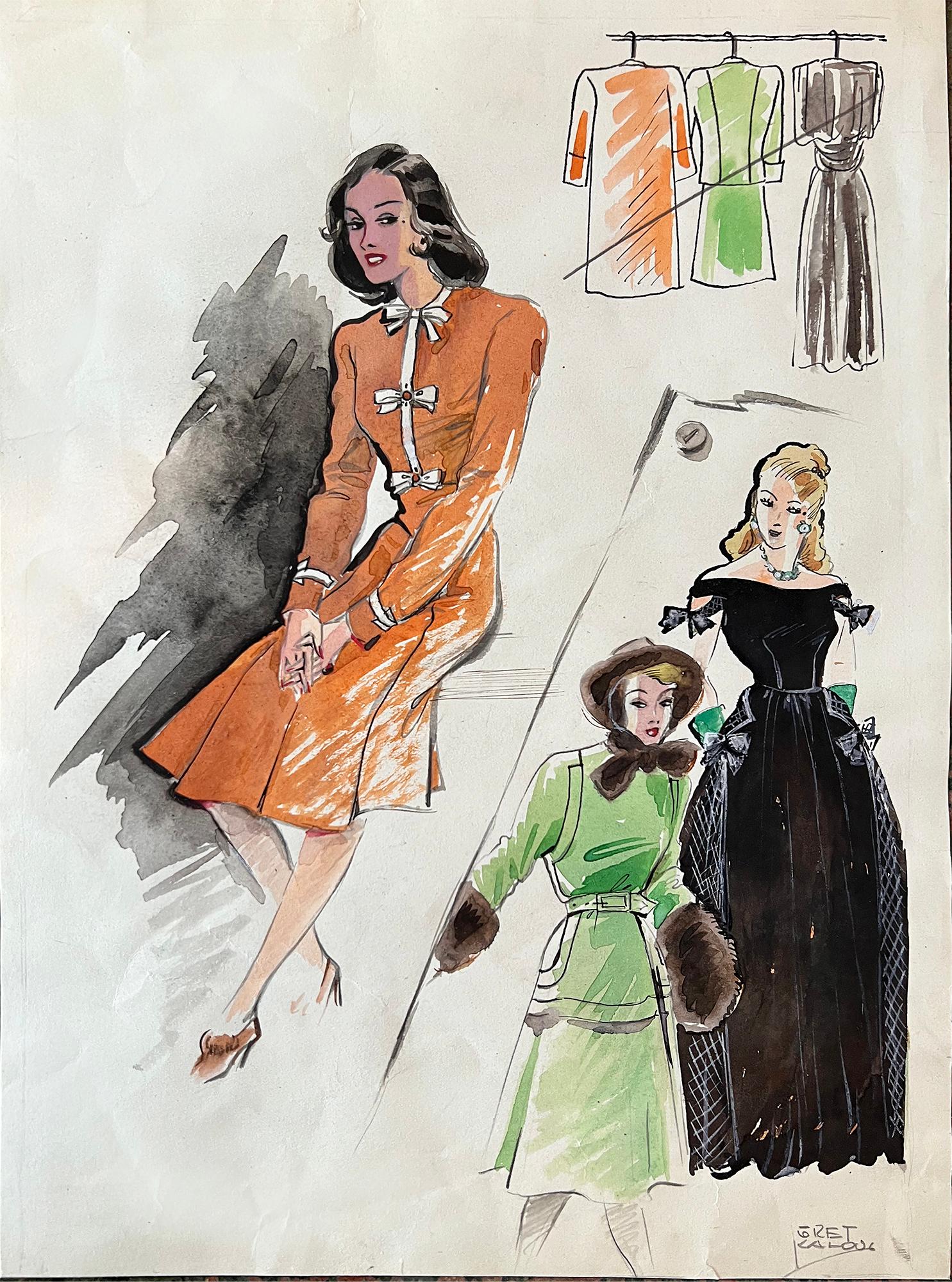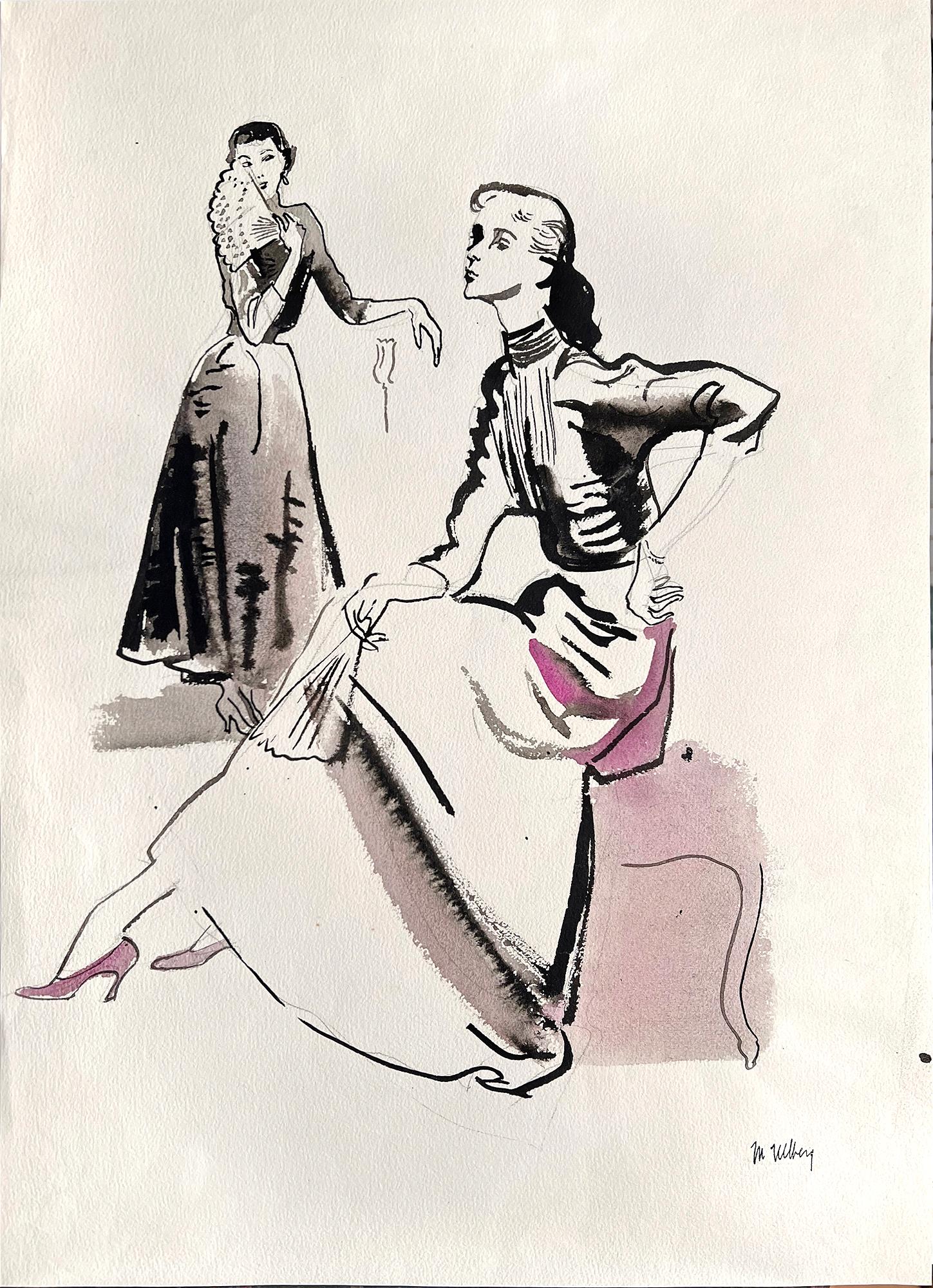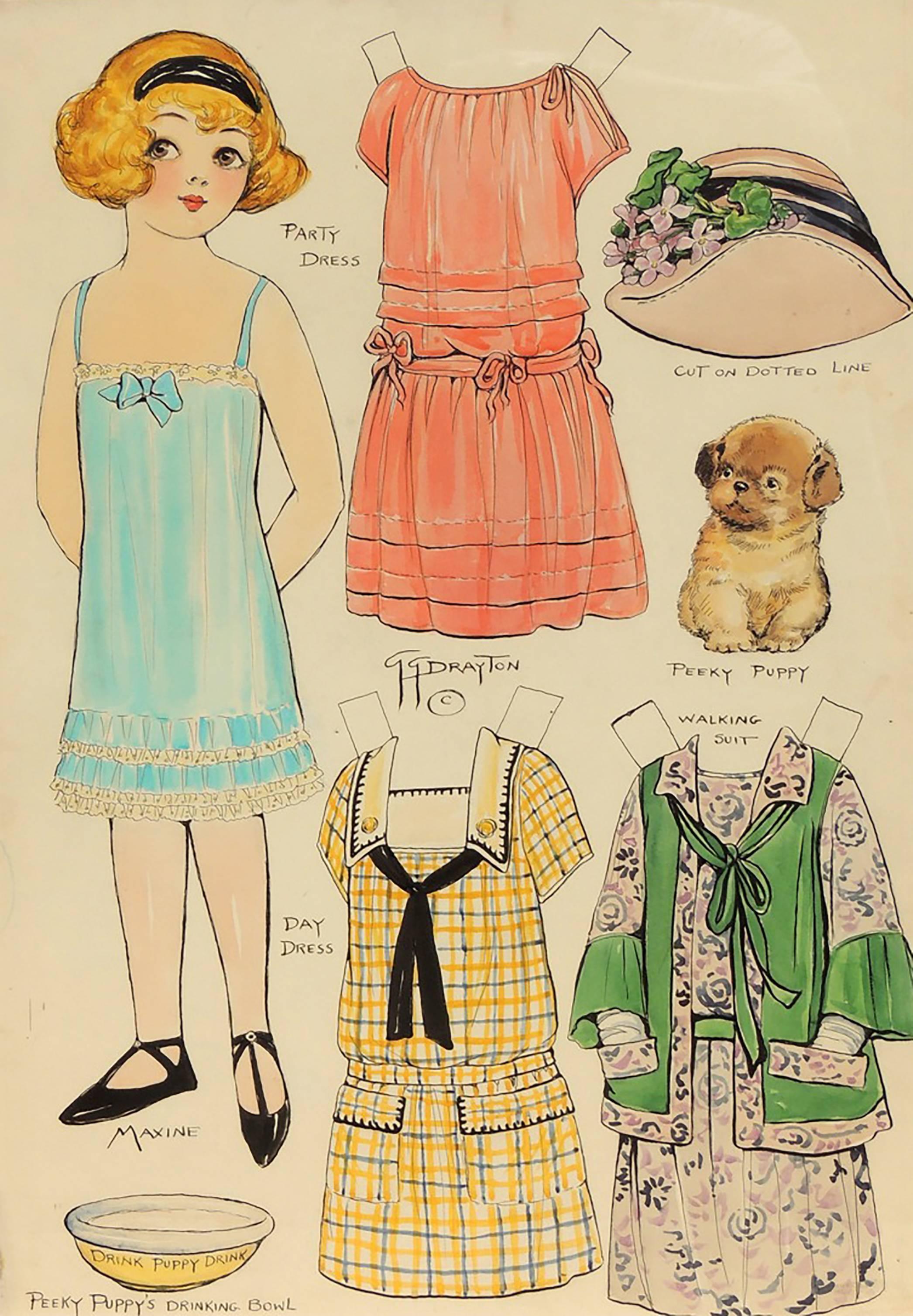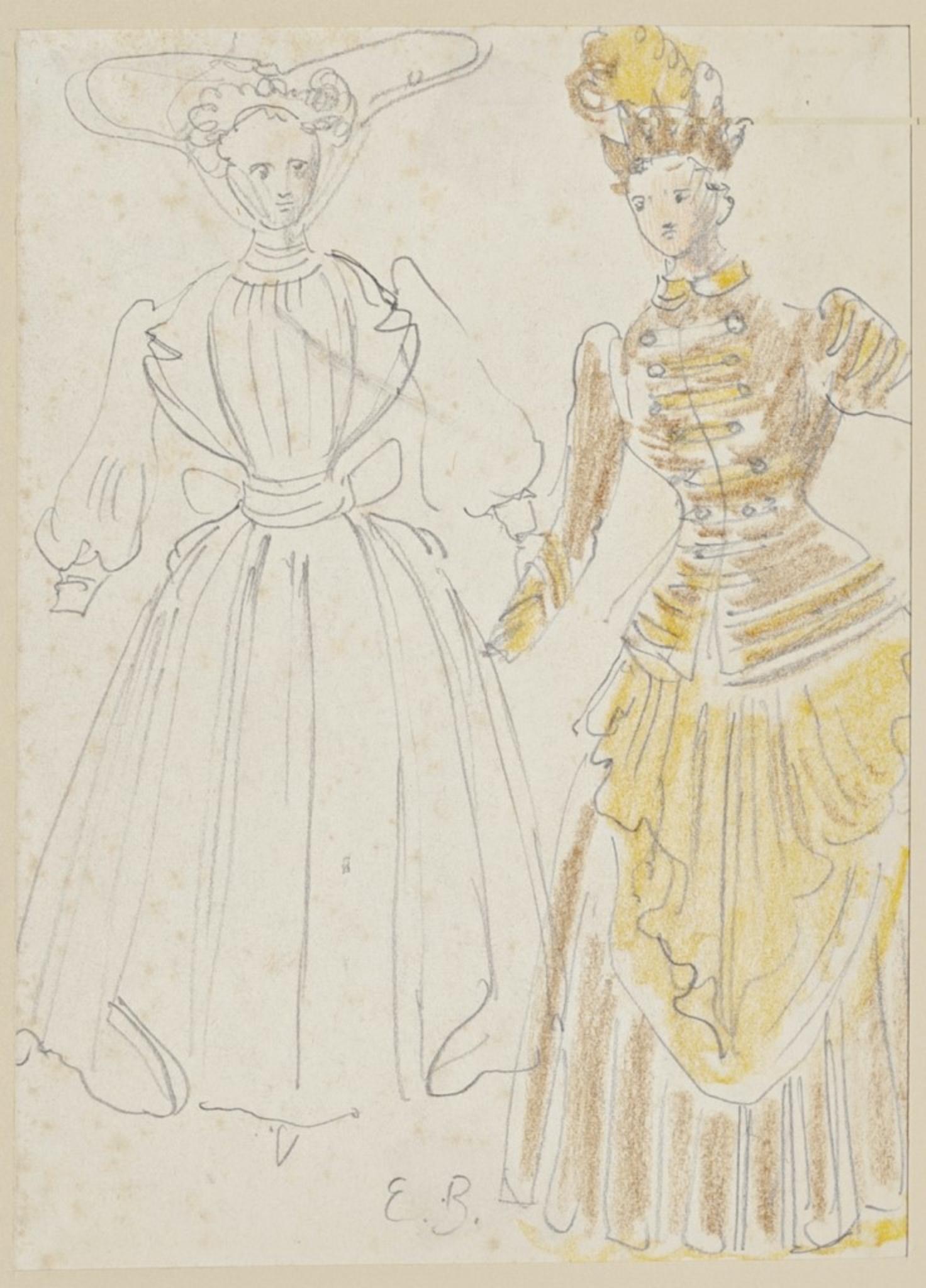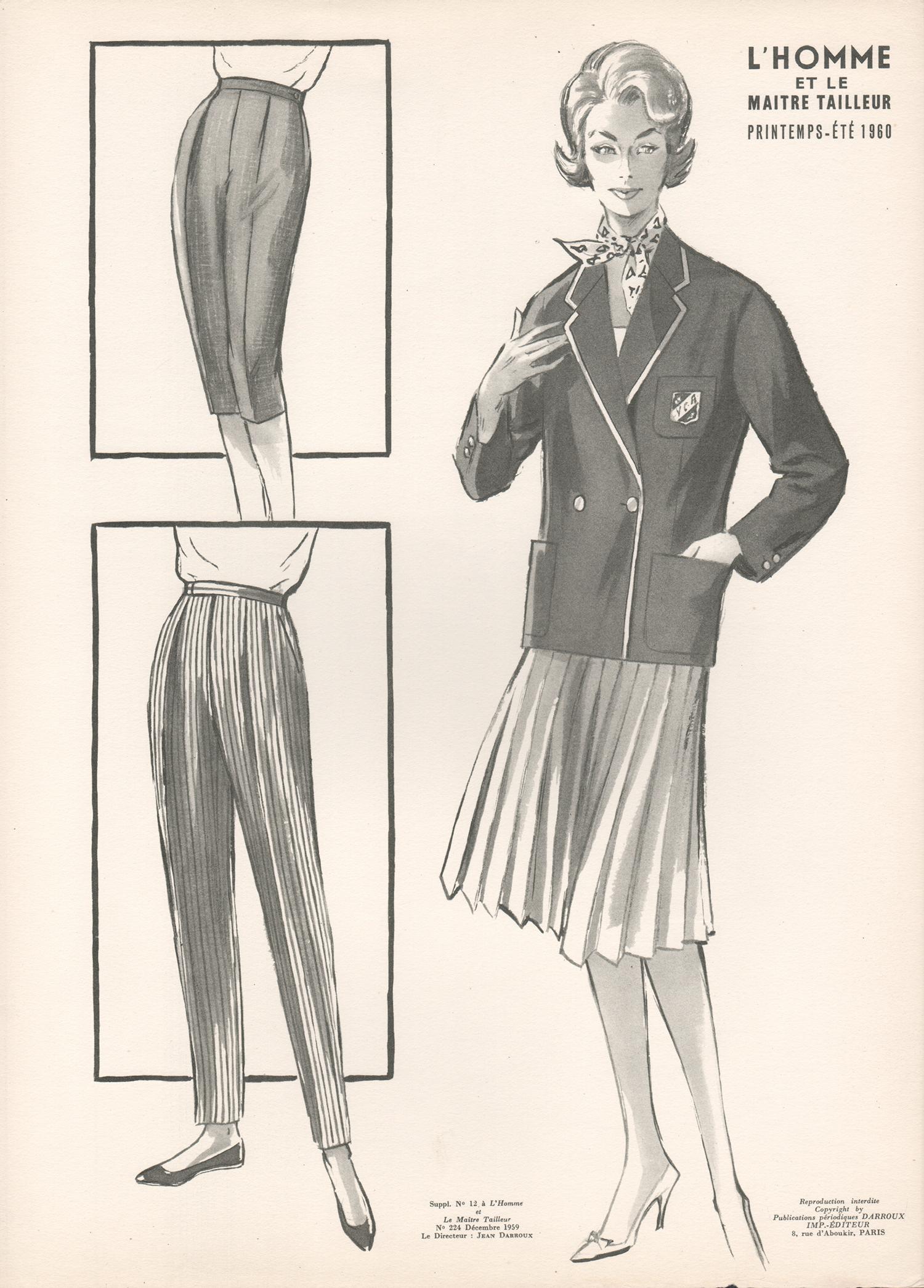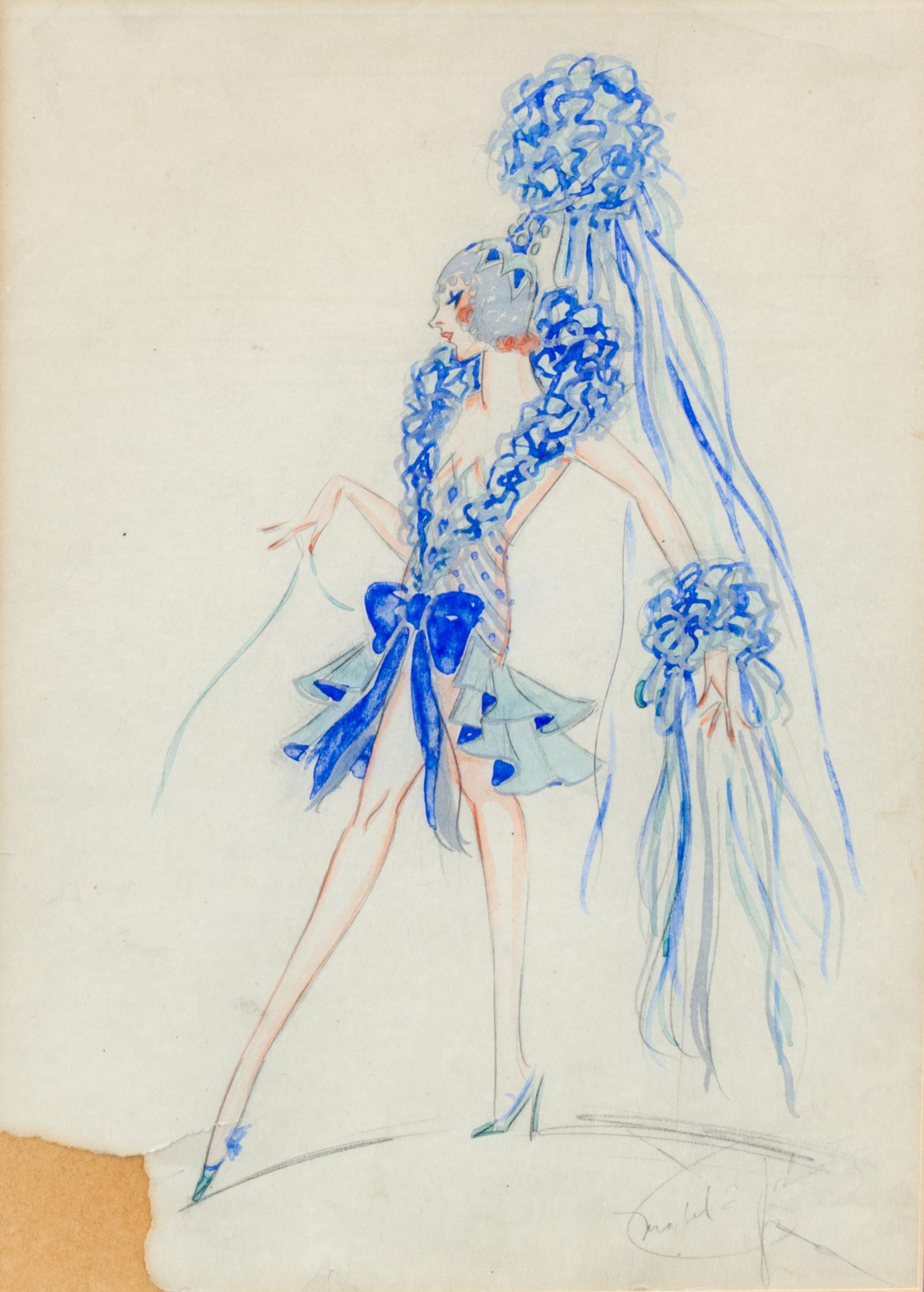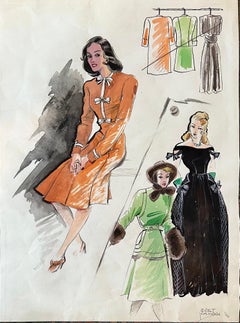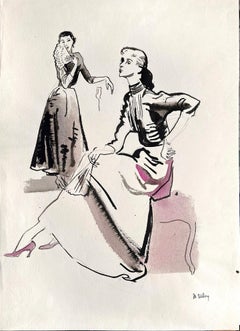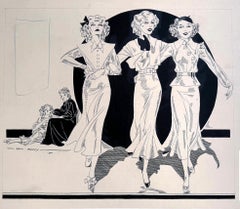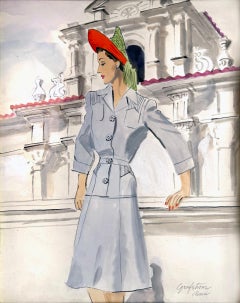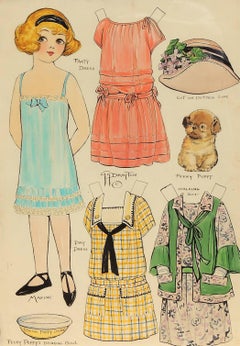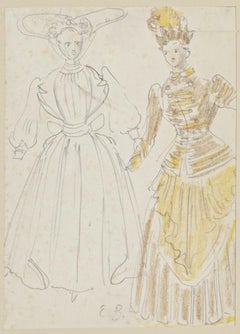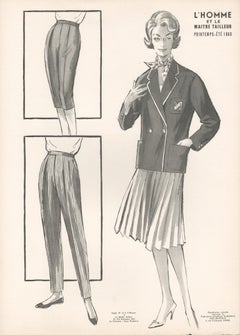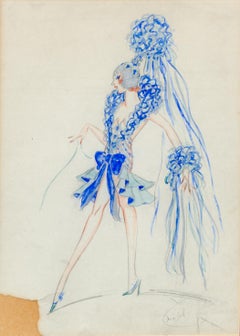Items Similar to Street Costumes, Gay Nineties Fashion - Female Illustrator
Want more images or videos?
Request additional images or videos from the seller
1 of 17
Ruth M KrepsStreet Costumes, Gay Nineties Fashion - Female Illustrator1945
1945
$5,000
£3,822.77
€4,403.05
CA$7,006.53
A$7,822.14
CHF 4,098.68
MX$95,750.61
NOK 52,053.29
SEK 49,079.65
DKK 32,860.45
About the Item
Street Costumes by Ruth Kreps.
Signed lower right.
Most likely for a book published in the 1930's about turn of the century women's fashion. "Costume Design of the Gay Nineties" The House of Little Books (January 1, 1945) by Mary Julian Glover, Ruth Margaret Kreps,
Archivally matteed by not framed.
Condition is excellent.
Ruth Kreps attended the Cornish School of Art at the same time in the 1930s as Syvilla Fort, an important African-American choreographer. During that time Syvilla modeled for several student artists, including Ruth Kreps. Some of the paintings of Syvilla Fort are featured in history, Women Painters of Washington.
I have spoken to Martin Zambito, who's pictures are featured at history link, and they were the source for my discovery. There is definitely a resemblance of Syvilla in the painting by Ruth Kreps on her homepage, especially if you compare her eyes in pictures her and of the painting.
Written and submitted by Glenn Airgood, who submitted the painting referenced above.
Born in Washington State in 1900, she attended the Cornish Art School in Seattle as well as the California School of Fine Arts. She was a charter member of Women Painters of Washington and made her home in Seattle.
Exhibitions:
Women Painters of Washington; Seattle Art Museum1932 to 1935; Oakland Art Gallery; Northwest Printmakers.
Source:
Trip and Cook. Washington State Art and Artists
From: Ask Art
- Creator:Ruth M Kreps (1900, American)
- Creation Year:1945
- Dimensions:Height: 13.5 in (34.29 cm)Width: 10 in (25.4 cm)Depth: 1 in (2.54 cm)
- Medium:
- Movement & Style:
- Period:
- Condition:
- Gallery Location:Miami, FL
- Reference Number:1stDibs: LU385313367862

About the Seller
4.9
Gold Seller
Premium sellers maintaining a 4.3+ rating and 24-hour response times
Established in 2005
1stDibs seller since 2016
115 sales on 1stDibs
Typical response time: 1 hour
- ShippingRetrieving quote...Shipping from: Miami, FL
- Return Policy
Authenticity Guarantee
In the unlikely event there’s an issue with an item’s authenticity, contact us within 1 year for a full refund. DetailsMoney-Back Guarantee
If your item is not as described, is damaged in transit, or does not arrive, contact us within 7 days for a full refund. Details24-Hour Cancellation
You have a 24-hour grace period in which to reconsider your purchase, with no questions asked.Vetted Professional Sellers
Our world-class sellers must adhere to strict standards for service and quality, maintaining the integrity of our listings.Price-Match Guarantee
If you find that a seller listed the same item for a lower price elsewhere, we’ll match it.Trusted Global Delivery
Our best-in-class carrier network provides specialized shipping options worldwide, including custom delivery.More From This Seller
View AllMid-Century Fashion Designs by Austrian Female Illustrator
Located in Miami, FL
Mid-Century fashion watercolors by accomplished Austrian Female Illustrator. Fashion Gret Kalous-Scheffer (1892 Vienna - 1975 Vienna) was a daughter of the renowned Austrian painter...
Category
1950s Feminist Figurative Drawings and Watercolors
Materials
Watercolor, Pencil
Mid- Century Fashion Illustration - Neiman Marcus ?
By Marjorie Ullberg
Located in Miami, FL
1950's elegant fashion models pose depicted for a designer clothing line for a major San Francisco department store - Perhaps Neiman Marcus. Estate ...
Category
1950s Modern Figurative Drawings and Watercolors
Materials
Watercolor, Pencil
The Three Graces Fantasy Fashion Illustration - Female Illustrator
Located in Miami, FL
For your consideration, we have a pen and ink drawing of an interpretation of The Three Graces, who strike a pose for a 1930s fashion ad. In Greek mythology, they were goddesses w...
Category
1930s American Impressionist Figurative Drawings and Watercolors
Materials
India Ink, Board
Fashion Model Illustration Perhaps for Vogue Magazine
By Ruth Sigrid Grafstrom
Located in Miami, FL
This high-fashion illustration was most likely created between 1938 and 1940 for an inside editorial in a major newspaper, such as Vogue or McCall's. It showcases Ruth Grafstrom's d...
Category
1930s American Modern Figurative Drawings and Watercolors
Materials
Paper, Ink, Watercolor
Hand-Me-Downs - Street Children - Waif - Cockney Gutter Imps.
Located in Miami, FL
19th Century Street Art - British children's book author and illustrator Edith Farmiloe depicts a waif-like girl - Cockney Gutter Imp - who is disheveled. The artist draws her i...
Category
Early 1900s Romantic Figurative Drawings and Watercolors
Materials
Paper, Pen, Ink
Art Deco Flapper Illustration
Located in Miami, FL
Original Vintage 1920's Ink and Watercolor Fashion Illustration by listed New England artist Harriette (Nutting) Cooper (1901 - 2002).
The illustration depicts a lovely young flappe...
Category
1920s Art Deco Figurative Drawings and Watercolors
Materials
Watercolor, Pencil
You May Also Like
Dress-Up Days
By Grace G. Drayton
Located in Fort Washington, PA
Medium: Watercolor and Ink on Paper
Dimensions: 28.00" x 19.50"
Signature: Signed in Center
Category
Early 20th Century Figurative Drawings and Watercolors
Materials
Paper, Ink, Watercolor
Theatrical Costume - Drawing by Eugène Berman - 20th Century
Located in Roma, IT
Theatrical Costume is an original drawing in watercolor and pencil on paper, glued on cardboard, realized by Russian scenographer Eugène Berman, hand-signed.
Image Dimension: 35 x 2...
Category
20th Century Modern Figurative Drawings and Watercolors
Materials
Watercolor, Pencil
French Mid-Century 1958 Fashion Design Vintage Lithograph Print
By Jean Darroux
Located in Melbourne, Victoria
French fashion design published as a Supplement to 'L'Homme', a Parisien fashion periodical. Darroux was a Parisien tailor, who designed several ...
Category
Mid-20th Century Post-War Figurative Prints
Materials
Lithograph
Broadway Costume Illustration by Designer Mabel E. Johnston
Located in New York, NY
Mabel E. Johnston
Untitled, c. 1920s
Watercolor and pencil on paper
Sight: 18 x 12 1/2 in.
Framed: 39 x 21 1/4 x 1/2 in.
Signed lower right: Mabel E. Johnston
The first tidbit I fou...
Category
1920s American Modern Figurative Drawings and Watercolors
Materials
Paper, Watercolor, Pencil
Fashionable Women - Original Ink Drawing - Early 20th Century
Located in Roma, IT
Fashionable Women is an original drawing in china ink by an Anonymous artist in the early 20th Century.
This modern artwork represents a standing women dressed-up and with a sophist...
Category
Early 20th Century Modern Figurative Drawings and Watercolors
Materials
Ink
French Mid-Century 1970s Fashion Design Vintage Lithograph Print
Located in Melbourne, Victoria
Original colour lithograph of a French fashion design from 'Haute Couture'. Published in a folio of designs for Summer 1971.
32cm by 22cm (sheet)
Category
1970s Post-War Figurative Prints
Materials
Lithograph
